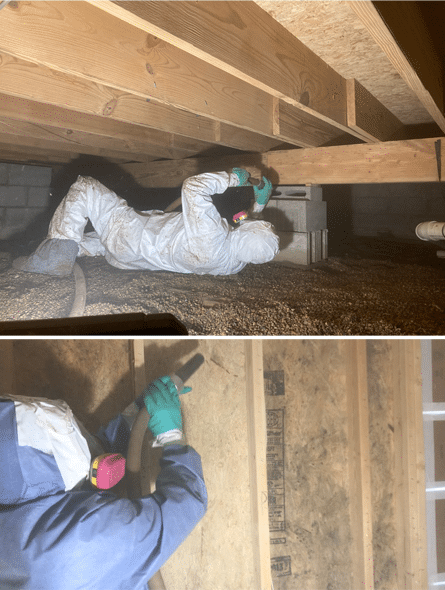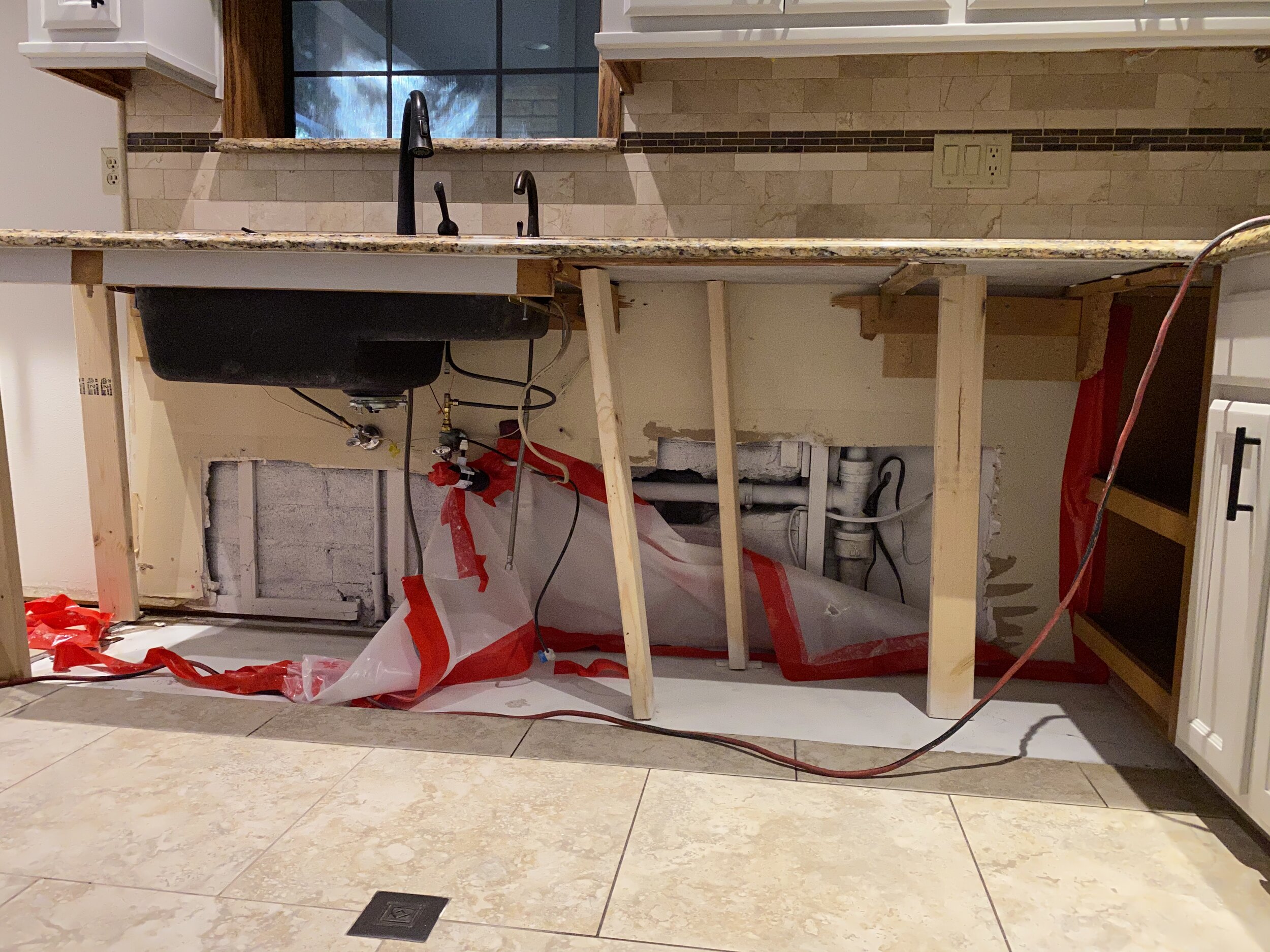Effective Mold Removal Approaches to Remove Mold Contamination in Your Residential Property
Mold contamination is a typical concern that residential or commercial property proprietors face, typically leading to health issues and building damage if not attended to promptly and efficiently. By recognizing the vital techniques for getting rid of mold and mildew, home proprietors can take aggressive steps to guarantee a risk-free and healthy and balanced living environment.
Determining Mold And Mildew Resources

One key approach for determining mold and mildew resources is performing an aesthetic evaluation. This entails carefully evaluating all locations of the property, including covert spaces like behind walls and under floor covering. Dampness meters and thermal imaging video cameras can additionally be utilized to find hidden water leaks or wetness pockets that can be advertising mold and mildew growth.
Additionally, air sampling can assist determine mold and mildew sources by discovering elevated mold spore levels airborne. By determining and dealing with the root source of mold and mildew growth, removal initiatives can be extra targeted and inevitably a lot more effective in eliminating the mold and mildew contamination.
Appropriate Ventilation Strategies
Efficient mold and mildew removal not only relies upon identifying mold resources however likewise stresses the value of carrying out appropriate air flow methods to avoid future mold growth (mold remediation philadelphia). Correct air flow plays an important role in regulating interior humidity degrees, which in turn assists to discourage mold spores from prospering in damp atmospheres. By ensuring great air flow throughout the home, excess moisture can be decreased, hence producing an environment less for mold development
One reliable ventilation strategy is making use of exhaust followers in moisture-prone areas such as shower rooms, kitchens, and laundry areas. These fans assist to get rid of humid air and avoid it from collecting on surfaces. Furthermore, opening up doors and windows when climate permits can likewise help in enhancing air flow and lowering moisture levels inside your home.
It is essential to address any type of ventilation problems immediately to preserve a healthy and balanced interior environment and avoid mold contamination. Routine maintenance of ventilation systems, such as cleansing filters and air ducts, is vital to ensure optimal air flow and stop the build-up of wetness that might cause mold development.
Effective Cleansing and Disinfecting
Mold and mildew spores can spread rapidly if not effectively cleaned and decontaminated, leading to reoccuring mold growth and potential health threats. When tackling mold and mildew contamination, it is essential to begin by removing any kind of visible mold and mildew development utilizing ideal cleaning remedies and techniques.
After the physical elimination of mold, sanitizing the affected areas is important to kill any kind of remaining mold spores and protect against regrowth. Disinfectants such as bleach services or hydrogen peroxide can be made use of to sanitize the cleaned up surface areas extensively. When utilizing disinfectants to guarantee efficiency and decrease health risks, it is essential to comply with maker guidelines and safety and security standards. Regular cleaning and disinfecting practices can help preserve a official site mold-free atmosphere and protect the health and wellness of passengers in the residential or commercial property.
Encapsulation and Sealing

Encapsulation and securing are crucial strategies in mold and mildew removal projects to avoid the reoccurrence of mold development. By encapsulating the mold, it efficiently seals off straight from the source the mold-infested surfaces, inhibiting further growth and decreasing the risk of exposure to hazardous mold particles.
By securing off cracks, crevices, and spaces in walls, floors, or ceilings, the entrance points for wetness and mold spores are minimized, producing an environment much less favorable to mold development. This method not just protects against the spread of mold yet likewise aids in managing moisture degrees within the residential property, better inhibiting mold and mildew advancement.
Tracking and Avoidance
In keeping a mold-free environment post-encapsulation and sealing, thorough surveillance and avoidance techniques play a vital role in guaranteeing long-term efficiency. Regular inspections are important to identify any type of indications of mold resurgence or new development without delay. These assessments should include not only formerly influenced locations but also various other prone areas prone to moisture accumulation.
Checking moisture levels is vital in mold and mildew avoidance. Keeping interior humidity below 60% can considerably impede mold and mildew development. Using dehumidifiers in damp locations, such as cellars and restrooms, can aid in preserving ideal moisture levels. Appropriate air flow, consisting of making use of exhaust fans in restrooms and kitchens, is additionally crucial in reducing moisture and protecting against mold growth.
Moreover, informing passengers on mold prevention techniques, such as immediately dealing with leakages, enhancing air circulation, and dealing with condensation concerns, is critical. Motivating tidiness and timely elimination of any water-damaged materials can additionally prevent mold and mildew infestations. By executing a detailed surveillance and prevention strategy, homeowner can efficiently safeguard their spaces against mold contamination.
Verdict
Finally, effective mold remediation techniques are important in eliminating mold contamination in homes. By identifying mold and mildew resources, executing correct air flow methods, utilizing efficient cleaning and decontaminating techniques, sealing and enveloping impacted locations, and continuously monitoring and preventing future mold development, residential property proprietors can successfully remove mold issues. It is very important to attend to mold and mildew contamination immediately to maintain a healthy and balanced interior setting and avoid additional damages.
Effective mold removal not only relies on determining mold and mildew sources yet likewise stresses the value of implementing correct air flow techniques to protect against future mold and mildew development. When dealing with mold and mildew contamination, it is important to begin by getting rid of any kind of noticeable mold development using ideal cleansing options and strategies.Encapsulation and Get More Info sealing are essential techniques in mold and mildew removal jobs to avoid the reoccurrence of mold development. By sealing off splits, holes, and voids in wall surfaces, floors, or ceilings, the entrance points for dampness and mold spores are decreased, creating an atmosphere less conducive to mold growth. By determining mold and mildew sources, implementing correct air flow strategies, using efficient cleansing and sanitizing techniques, enveloping and securing influenced locations, and constantly monitoring and protecting against future mold development, home owners can effectively eliminate mold issues.